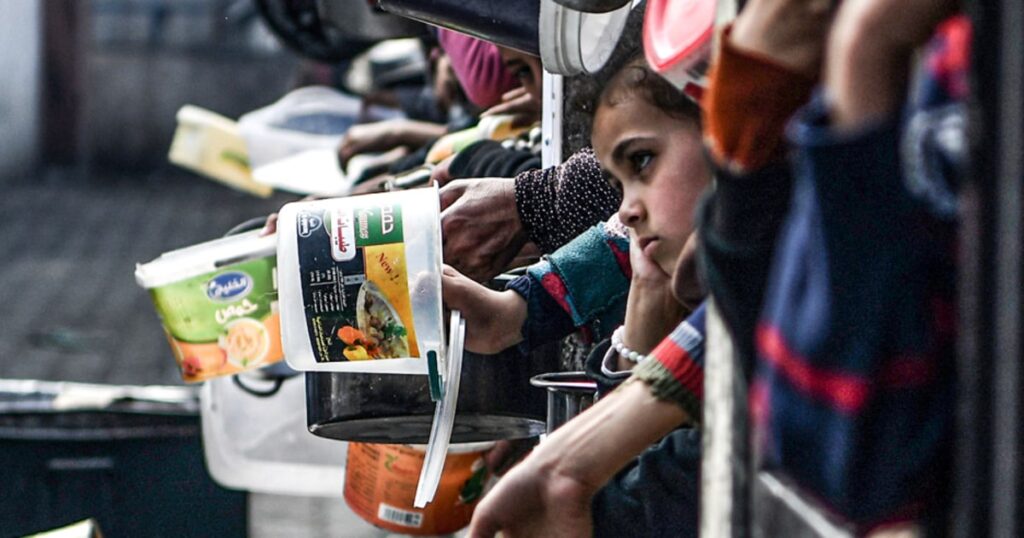The hunger crisis we’re watching unfold in Gaza is striking in part for its sheer severity. “This is the highest number of people facing catastrophic hunger ever recorded by the Integrated Food Security Classification system — anywhere, anytime,” Guterres said during a Monday press briefing. We “are about to witness the most intense famine” since World War II, Alex de Waal, a professor at Tufts University and an expert on humanitarian issues, wrote in The Guardian on Thursday.
The IPC measures food insecurity on a five-level scale. Phase 1 denotes normal conditions. In Phase 5, there’s “an extreme lack of food and/or other basic needs even after full employment of coping strategies” and “starvation, death, destitution and extremely critical acute malnutrition levels are evident.” A famine exists when at least 20% of households in a given area have reached Phase 5. As of March 15, according to the IPC, 95% of Gazans were at Phase 3 or higher. Conditions are more dire in the north, where famine conditions are taking hold faster than in the south.
The crisis in Gaza also stands out for the number of intentional decisions that have helped trigger these conditions. This is a foreseen consequence of Netanyahu’s stated goal of destroying Hamas. It is what happens when an entire population is collectively punished in an escalation of the effective siege that the Gaza Strip has been under since 2007. Because, shockingly, there’s no shortage of food on hand to feed the 2.2 million Palestinians who call the Gaza Strip home. The United Nations has said there’s plenty of aid at the ready, either at the border or in the region, to reverse the downward spiral toward famine.
But Israel has instituted roadblocks — some procedural, some literal — that are hindering humanitarian groups’ ability to distribute supplies. The only two border crossings that are regularly operating are in southern Gaza, exacerbating the difficulty in providing aid to…
Read the full article here





